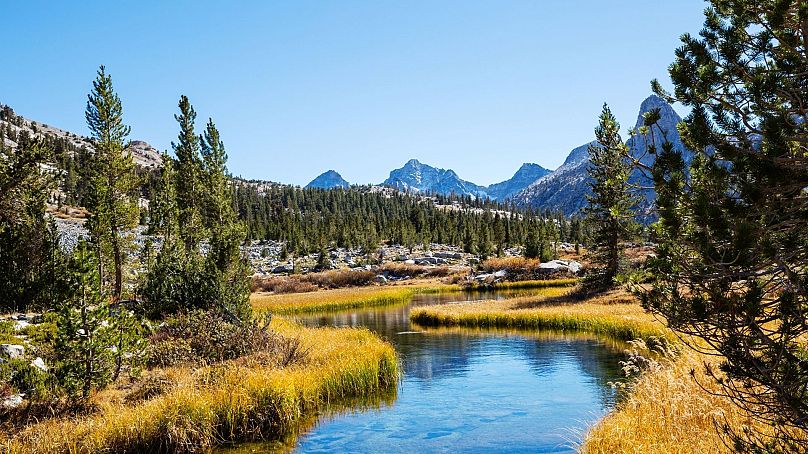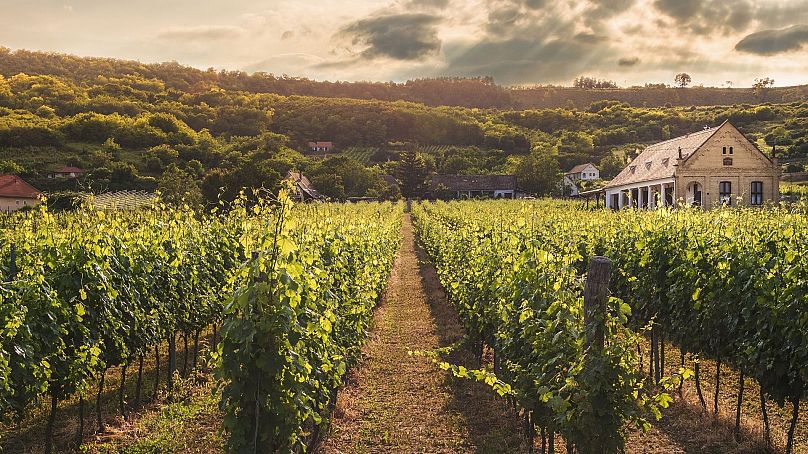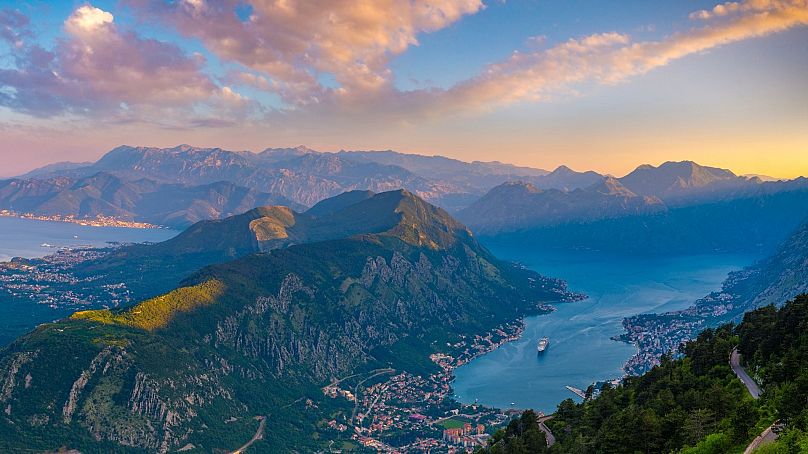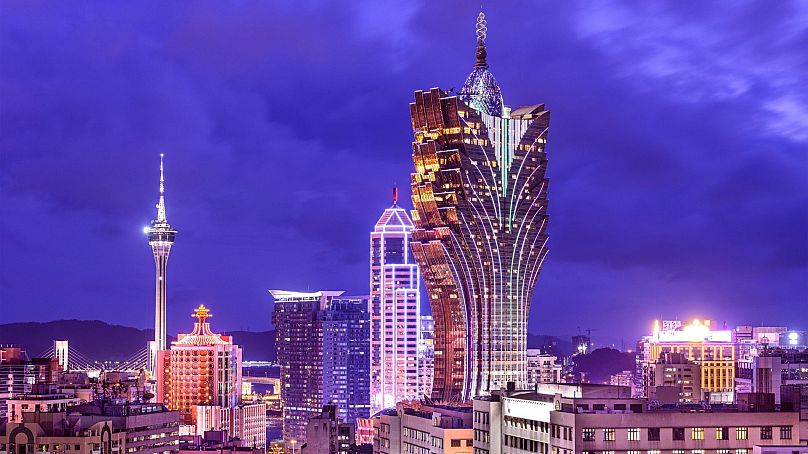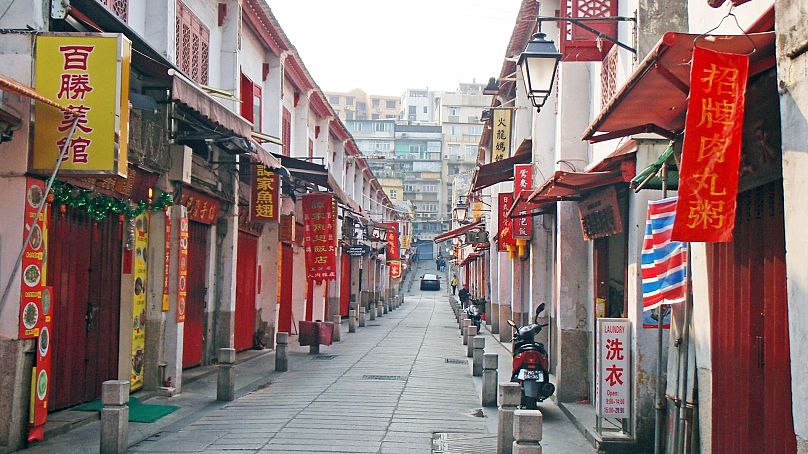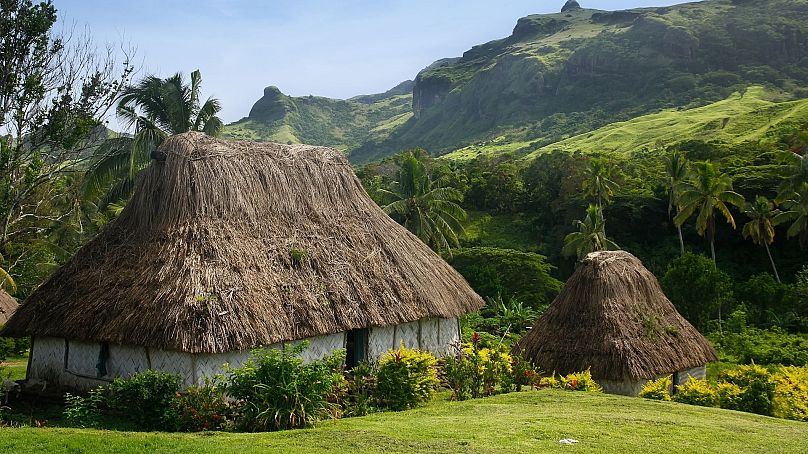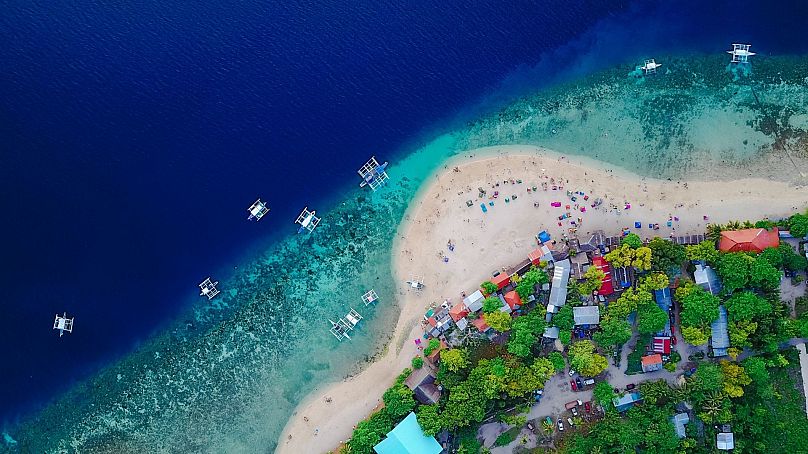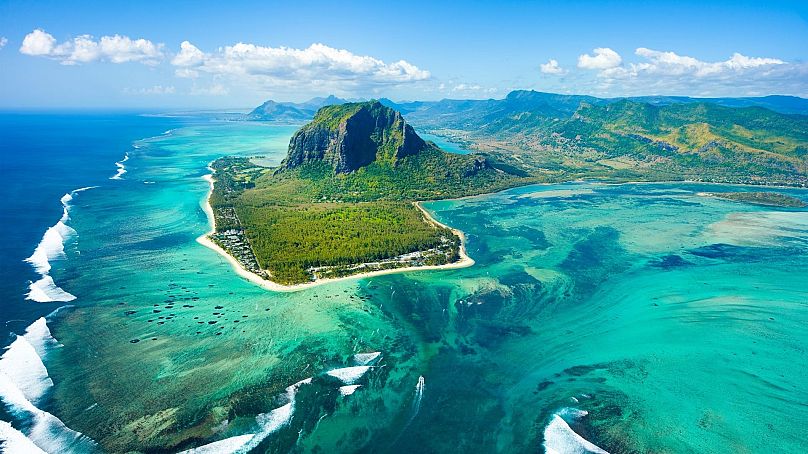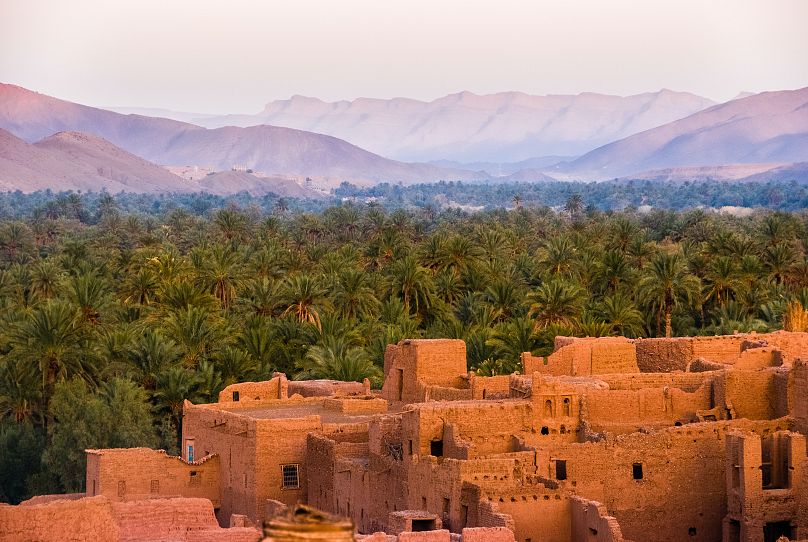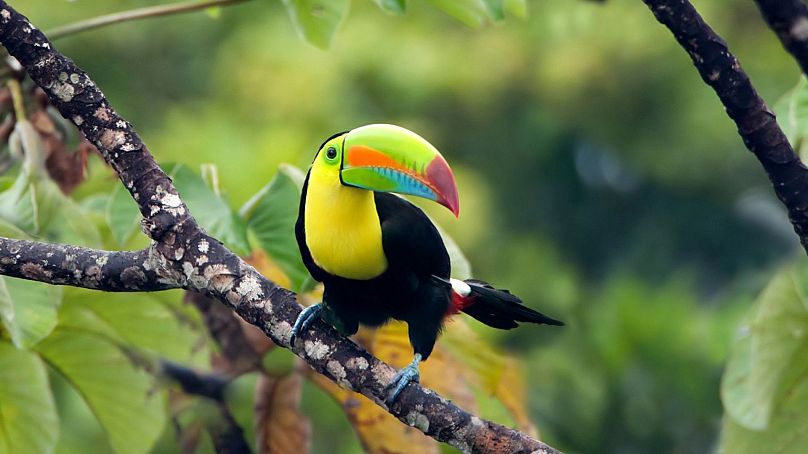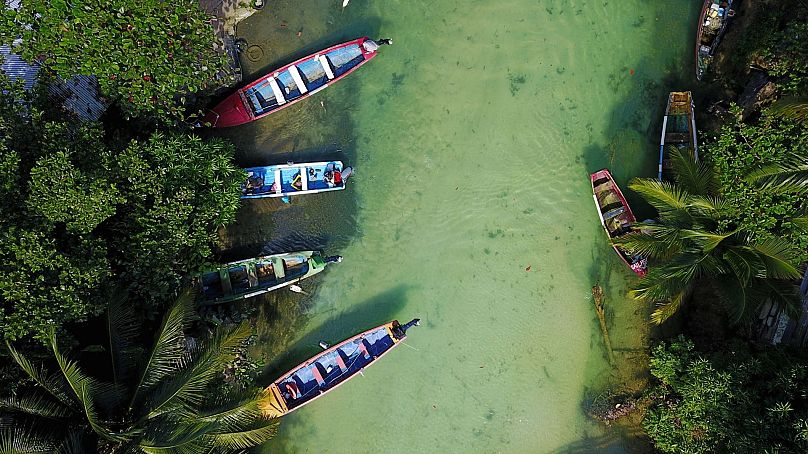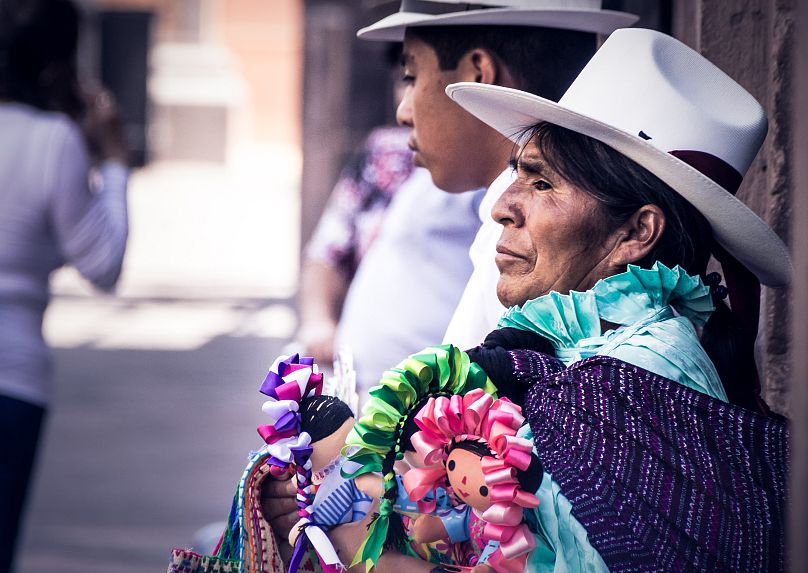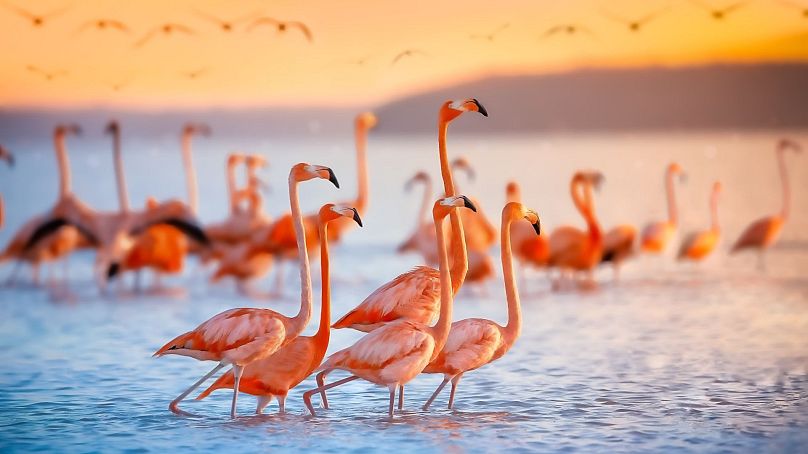We help you get off the beaten track in the places which have been hit hardest by a lack of tourism.
International tourist arrivals worldwide were down on average by 72 per cent between January and October 2020 due to the COVID-19 pandemic. And while many of us remain in lockdown at the start of this year, we’re looking ahead to future travel.
Every aspect of the travel industry has been hit hard by the pandemic. But some destinations are particularly vulnerable because a high amount of their GDP relies on tourism.
Many of us have had time to reflect during lockdown and want to make a conscious effort to ensure the income from tourism reaches further afield - and that we make a positive impact on the destinations we visit.
Now is the time for the travel industry to plan, and come back better and stronger than ever. After months of lockdown and social distancing, many of us crave wide open green spaces and little-known gems where overtourism isn’t a problem.
We’ve rounded up some of the destinations that need our help the most to recover, as well as some advice on where to go to get off the beaten track.
Hidden Europe
Spain, Croatia and Montenegro are the top three European countries that rely on tourism and are therefore some of the most vulnerable to COVID-19 travel restrictions. Tourism accounts for between 10-12 per cent of GDP in these destinations.
Alternative places to see in Spain
In Spain, most of the share in trade from holidaymakers is concentrated along the coast or in its big cities. While you can’t go wrong with sun, sand and sangria, the country is packed with lesser-known pockets of culture waiting to be explored.
From Medieval ruins in Albarracínl to breathtaking views of the Sierra Nevada in Capileira, there are dozens of secret villages which will reward the traveller with exclusive, uncrowded and authentic cultural experiences in return for their custom.
Croatia: Vineyard hopping along the Dalmatian coast
Much like Spain, Croatia is peppered with quaint historical villages - many of which have vineyards. Nothing beats sampling wine straight from the barrel at an idyllic, family-owned winery.
This website helps you to find wine tours at small, off the beaten track establishments. Even if you don’t drink, a stay at a vineyard has more on offer such as bike tours, hikes, food tastings and guided walks.
The world’s first underwater winery
For something really different, pay a visit to Edivo Winery, the world’s first underwater winery, on the Pelješac peninsular near Dubrovnik. A tour here will give you an in-depth (pardon the pun) understanding of their unique approach to producing wine, and you’ll be invited to scuba dive down to see where the magic happens.
The wine here is aged between 18-25 metres below the surface in specially patented terracotta amphora (like large wine bottles) for two years. The sea here remains at a stable 15 degrees celsius, which presents optimum conditions for the wine to mature.
Once you’ve explored what lies beneath, you can enjoy wine tasting and a traditional Istrian meal back at the Edvio wine bar.
Montenegro: Exclusive skiing and unspoiled landscape
Croatia’s neighbour, Montenegro, is 90 per cent wild mountainous terrain and one of our favourite skiing destinations in Europe outside the Alps.
A former part of Yugoslavia, it’s one of the world’s youngest countries having only become independent in 2006. Tumbling hills, pristine seas and ancient settlements await you here.
Ride the Montenegro Express
The Montenegro Express takes you from Bar in Montenegro to the Serbian capital of Belgrade.
Notable scenery along this 12-hour journey includes the Dinaric Alps, the Biogradska Gora National Park (one of Europe’s few remaining rainforests), and Lake Skadar (southern Europe’s largest lake). You’ll even dip into parts of Bosnia and Herzegovina.
Asia and the Pacific off the beaten path
If you feel like jetting off further afield, pay Macao, the Philippines or Fiji a visit.
Tourism makes up almost half (48 per cent) of GDP in the Chinese region of Macao and 90 per cent of its total exports.
Where is Macao and what is it like?
Macao is an autonomous region on the south coast of China, across the Pearl River Delta from Hong Kong.
Fishermen and farmers were some of the region’s earliest settlers. During ancient times, Macao was part of the Silk Road and ships headed for the fashion capitals of Europe would load here.
Nowadays, Macao takes on a much more cosmopolitan persona. It’s coined the ‘Las Vegas of Asia’ due to the huge casinos and shopping malls along the Cotai Strip. One of the landmarks here is the Macao Tower which offers panoramic views of this ever-growing metropolis.
Walk through history in Macao
There are still plenty of places to find tranquility in one of Macao’s beautiful gardens. The grand 18th Century Camões Garden once belonged to the Chairman of the British East India Company. The hilly grounds are filled with walkways, flowering trees and even an art gallery - so there’s plenty to entertain you if you want to get away from the hustle and bustle of the city.
You could also take a walking tour of some of Macao’s historic neighbourhoods, such as Taipa Village which is home to several temples, or meet some of the locals in the old neighbourhood of Coloane.
Conscious tourism in Fiji
Tourism in Fiji makes up 13 per cent of its GDP. Generally, heading north will get you off the beaten path, where you can discover hidden gems and see the true Fiji.
On the island of Vorovoro in the province of Macuata in the Vanua Levu Group of northern Fiji, lies a sustainable tourism village where you can truly experience the Fijian way of life.
Between 2006-2011, Tribewanted leased the island and partnered with Chief Tui Mali and his tribe to establish tours. Guests can book.a stay here and learn to weave palm roofs, spearfish, ‘meke’ (dance) and pick up some of the local lingo.
The sustainable village has traditional Fijian ‘bure’ houses, compost toilets, gardens, and kitchens for the fully eco travel experience.
The project was taken over by Chief Mali and his tribe in 2011, and the island continues to welcome travellers keen to discover real Fiji.
How to reach Vorovoro
You can get to Vorovoro by boat from the town of Labassa on the island of Vanua Levu.
Philippines: Secret islands
Fancy something more tropical after months in lockdown? The Philippines has more than 7,000 islands for you to pick from.
Whilst some areas of the Philippines are suffering from overtourism, there are plenty of hidden gems to explore which will help spread the share of income from tourism, which makes up 9 per cent of the GDP here.
Unspoiled natural beauty on the Caramoan Islands
These secluded and largely untouched islands are located in the Camarines Sur in the Bicol region. Think white sandy beaches, lush jungle, secret caves and tranquil lakes.
How to get to the the Caramoan Islands
They’re not easy to get to - which is why they remain largely un-trampled on. You’ll need to take a one hour flight from Manila to Legazpi, followed by a three hour car journey and a two hour speed-boat ride - but it’s so worth it.
Scuba diving around Apo Island
This is the island to come if you want to really disconnect from the world and enjoy simple living - with electricity here only available at certain times of the day.
The entire island is only 12 hectares (1km squared), so it’s possible to see it all on foot.
`Apo Island is considered one of the best scuba diving spots in the world. Since 1982, the local community here have worked hard to preserve and nurture a marine sanctuary, after overfishing seriously depleted the marine population.
Now, marine life is thriving again and an abundance of colourful corals, gentle sea turtles, and several species of fish can be seen. Paying for a scuba dive is also a great way to bring income to the local community on the island.
How can I get to Apo Island?
Apo Island is 7 kilometers from Negros, in the province of Negros Oriental of the Philippines. It’s because of the difficult journey there that not many people make the trip.
You’ll need to go to Dumaguete and travel to Malapatay, which is about an hour south of the city. From there, it’s a wet and wild boat ride to Apo Island’s shore in a traditional Southeast Asian boat called a ‘Bangka’.
Authentic Africa
Marvel at the flora and fauna in Mauritius, hike mountains in Morocco or discover the Ivory Coast in Cote d’Ivoire. Tourism makes up between 6-10 per cent of GDP in these countries.
Mauritius: Marine life and historic buildings
Mauritius is surrounded by the world’s third largest coral reef and is rich in biodiversity. There are plenty of diving and snorkelling spots to try here as well as an array of other water activities to choose from.
A visit to the island wouldn’t be complete, however, without exploring the history of it’s capital, St Louis. You’ll be spoilt for choice with what to eat - there's a variety of restaurants and street vendors.
Mountains and souks in Morocco
Morocco is a North African country with coastline along the Mediterranean Sea and North Atlantic Ocean. The life and culture here is built on a fusion of Berber, Arabian and European influences.
You can discover Fez’s ancient history or even learn to cook Moroccan food at Fez’s only cooking school. Or you could enjoy some retail therapy in one of the traditional souks of Marrakech.
But away from the two most typical attractions you think of in Morocco, there are also plenty of mountain hikes which offer stunning viewpoints.
Toubkal Massif is probably one of the most popular hiking spots for tourists. And for good reason - a hike up here will reward you with jaw-dropping views of the High Atlas mountains.
But if you don't feel like following the crowd, there are some fantastic hikes to be had across the Jebel Saghro in the east. Here you can wild camp among the mountains and marvel at the rock formations which resemble the rugged, red desert landscape of the Grand Canyon.
Cultural heritage on the Ivory Coast
Civil wars and political unrest have put tourists off visiting the Ivory Coast in previous years. But now the country is stable, it has many unspoiled beauty spots just waiting to be explored.
The capital city of Abidjan has been likened to New York City with its glittering skyscrapers. But it still maintains a tropical vibe.
Bordering with Guinea and Liberia is Mount Nimba Nature Reserve, which became a UNESCO World Heritage site in 1982. You won’t be short of flora and fauna to enjoy in this beautiful oasis.
And if you’re looking for a beach getaway with some culture thrown in, Grand Bassam, the country’s second city is a favourite among tourists and locals alike.
Grand Bassam became a UNESCO world heritage site in 2012. Once the trading post in Colonial Cote d’Ivoire, this area is characterised by its faded 19th Century buildings.
If you want to immerse yourself in the local culture, Korhogo is the place to go. Korhogo is the capital of the Senufo people and dates back to the 13th Century. In the villages, there are opportunities to witness weavers, painters, metalworkers and wood carvers at work using traditional techniques - you'll likely pick yourself up a nice souvenir. You might also be lucky enough to watch the ‘Boloy’ meaning 'Panther dance’ being performed by some of the young men.
Tropical vibes in the Americas
Panama, Jamaica and Mexico are the top three locations in the Americas which rely on tourism, which makes up 9 per cent of GDP in all three places.
Birds of paradise in Panama
Panama was put on the map by it’s world famous 77 kilometre Panama Canal, which transformed the world’s shipping of goods by connecting the Pacific Ocean to the Atlantic Ocean.
Predating that was the Panama Railway, which has served several industrial purposes since it’s inauguration in 1855. Today, it’s a fantastic trip for tourists to take, with notable sites such as Soberania National Park, past Gatun Lake and the Panama Canal along the route.
Panama is home to more species of birds and trees than the whole of North America, according to Panama’s official tourism website, so there are plenty of opportunities to get back to nature here.
National parks and luscious jungles surround Panama’s capital city, so you’re never far from nature and all it’s beauty.
Jamaica: Rainforests and reggae
This Carribean island is crammed with beautiful rainforests, reef-lined beaches and rugged mountains. It’s probably best known as being the birthplace of Bob Marley and Kingston, the nation’s capital, is not shy of this fact. It's quite the cultural experience staying in the heart of Jamaica's music scene.
WIld waterfalls
Dunns Falls are the most popular choice for tourists looking to take a dip in some waterfalls. But YS Falls is the lesser known - and equally as stunning - alternative. You can enjoy the YS waterfalls in one of two ways: either by whizzing past on a zipline or during a refreshing swim in the natural spring pool there.
If you like history, visit Accompong Village, which tells the story of Jamaica's Maroons (a name given to African slaves who fled their masters) who established settlements of their own there.
Accompong Village is named after one such Maroon from West Africa who fought the British and won possession of the land under the 1739 peace treaty.
Responsible tourism in Mexico
Last but not least, Mexico. It’s another country where the income from tourism is concentrated in hotspots such as Canun.
But there’s a lot more to this Latino country if you veer off the beaten path a bit. Wherever there’s a place overflowing with tourists, more often than not, there’s a quieter town or beach just around the corner. And that’s the case with San Pancho.
Round the coast from the overpopulated beaches of Sayulita, is it’s eco conscious neighbour, San Pancho, which is officially named San Francisco.
The town has a range of social impact and environmental programs in place. So if you are visiting the area, make sure you spend some money here and support the town’s efforts with more responsible travel.
Spot flamingos at the Celestún Biosphere Reserve
Celestún is a quiet fishing village with one of its greatest attractions being their population of flamingos at the UNESCO World Heritage Biosphere Reserve, which prides itself on responsible tourism. Boats have to keep their distance from the wild flamingos who live in the rainforests and mangroves there.
Most people visiting Celestún travel from the colonial city of Merida for the day. But we would recommend you to spend a night or two in this sleepy village, and wake up for the sunrise feeding of these pink feathered beauties. It’s a place to really enjoy when all of the other tourists have gone back to the city.












